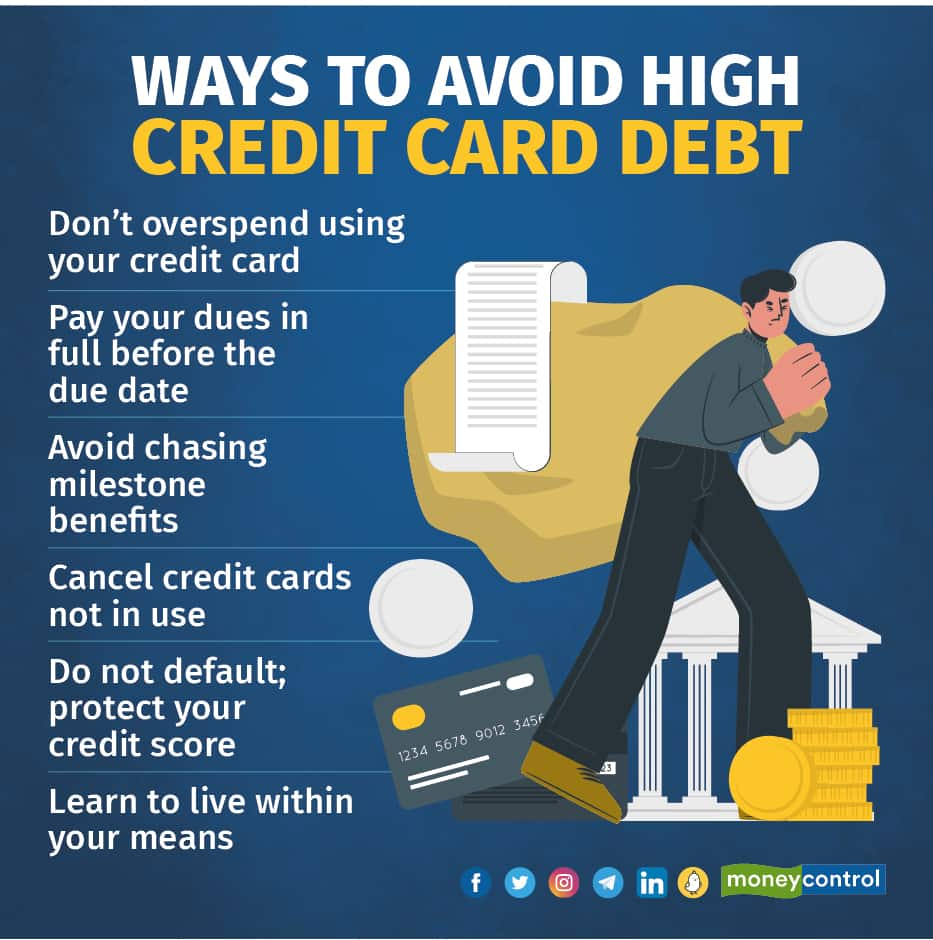According to RBI, as of April 2023 the total number of active credit cards stood at 8.7 crore (rounded off)
According to recent data released by the Federal Reserve Bank of New York, US credit card debt has reached $988 billion, its highest ever level. This translates to an average credit card debt of $10,000 (Rs 8.26 lakh) per household. Bankrate, a consumer financial services company based in New York, reported that nearly half (i.e., 46 percent) of cardholders are carrying a balance over from month to month.
“While credit cards offer convenience and potential savings if used responsibly, they can have severe financial and mental consequences if misused,” says Sumanta Mandal, Founder, TechnoFino. The current statistics from the US, he adds, are far from encouraging, as high levels of debt, especially with the burden of high annual percentage rates (APRs), are not beneficial.
In India, according to the Reserve Bank of India (RBI), as of April 2023 the total number of active credit cards stood at 8.7 crore (rounded off), an increase of more than one crore active cards from April 2022. “Expect active credit card user numbers to grow in the coming years as we move towards the digital era,” says Mandal. It is crucial for millennials to exercise caution while using credit cards, he adds.
So, what can we learn from the predicament of credit card holders in the US? Let’s take a look at the major risks and how to avoid such situations.
Be mindful of your expenses
As in the US, rising credit card debt is a concern for millennials (those born between 1981 and 1995) and Gen Z (those born between 1996 and 2010) in India. The millennials in India have also developed an appetite for shopping, booking holidays and borrowing by swiping a credit card routinely.
“Having credit available on your card may tempt you to overspend, but it's crucial to understand your actual spending capacity,” says Mandal. Only spend money that you already have and can pay off after receiving the bill, he advises. In other words, learn to live within your means.
Pay off credit card dues in full
It’s important to understand that credit cards are the most expensive form of credit. And so, it is advisable to pay your credit card dues in full before the due date. “If you pay only a minimum amount on the credit card, the balance starts attracting finance charges and new transactions become ineligible for the interest-free period, which can quickly create a debt spiral,” explains Radhika Binani, chief product officer, Paisabazaar.
Aman Kapoor, Founder and Principal Mentor at Education Assist says, “Generally, the card outstanding gets charged about 3 percent per month, which is 36 percent on an annualized basis. However, the effective interest that the customer will pay is far higher and can go as high as 50 percent, depending on the repayment pattern”.

Don’t overspend to achieve milestone benefits
Milestone benefits on credit cards are additional privileges you can avail of on crossing a certain spending threshold. These benefits may vary across categories, such as shopping, travel, entertainment, and so on. For instance, SBI Card Prime offers e-gift vouchers from Yatra.com or Pantaloons on reaching a milestone of Rs 5 lakh. Users also get Pizza Hut e-vouchers worth Rs 1,000 on spending Rs 50,000 in a calendar quarter. The annual membership fee is waived if you spend at least Rs 3 lakh in a year. Similarly, Axis Vistara Signature Card offers complimentary premium economy tickets on various spending milestones in a year.
“Now-a-days, millennials tend to overspend just to meet monthly, quarterly, or annual milestone benefits linked with the card,” says Mandal. Don't spend money just to earn some extra rewards or cashback, he cautions.
Avoid using multiple credit cards
Often, banks offer free credit cards targeting millennials entering the workforce. Also, there are co-branded cards targeting Gen X (those born between 1965 and 1981) consumers. To get additional benefits, this consumer’s end up with multiple credit cards and not using them.
Also, a lot of the time, these free credit cards are chargeable from the second year or have conditions to rack up a minimum of Rs 50,000 in annual expenses (varies with the type of card and bank). If the minimum expense criteria of the bank is met, they will waive annual credit card charges. So, you end up overspending on these cards to avoid the annual fees and avail of additional benefits.
“If you don’t need multiple credit cards then you should return the cards to the respective banks and get them cancelled,” says Gaurav Gupta, Co-founder and CEO of MoneyWide, a lending platform and RBI-licensed NBFC. If you have a card lying unused, then chances are banks will levy annual charges on the card despite the lack of use.
Do not default
High outstanding balances will be difficult to pay off in the long run, which can lead to missed payments, or in the worst cases, default.
“A default may bring down your credit score by 100 to 300 points, depending on the kind of default,” says Parijat Garg, a personal finance expert. He adds that if the credit score is around 600 points after default, it will be difficult to get a loan sanctioned by a bank in the future. Even if you do manage to get a loan, it will be at a higher interest rate, he warns.